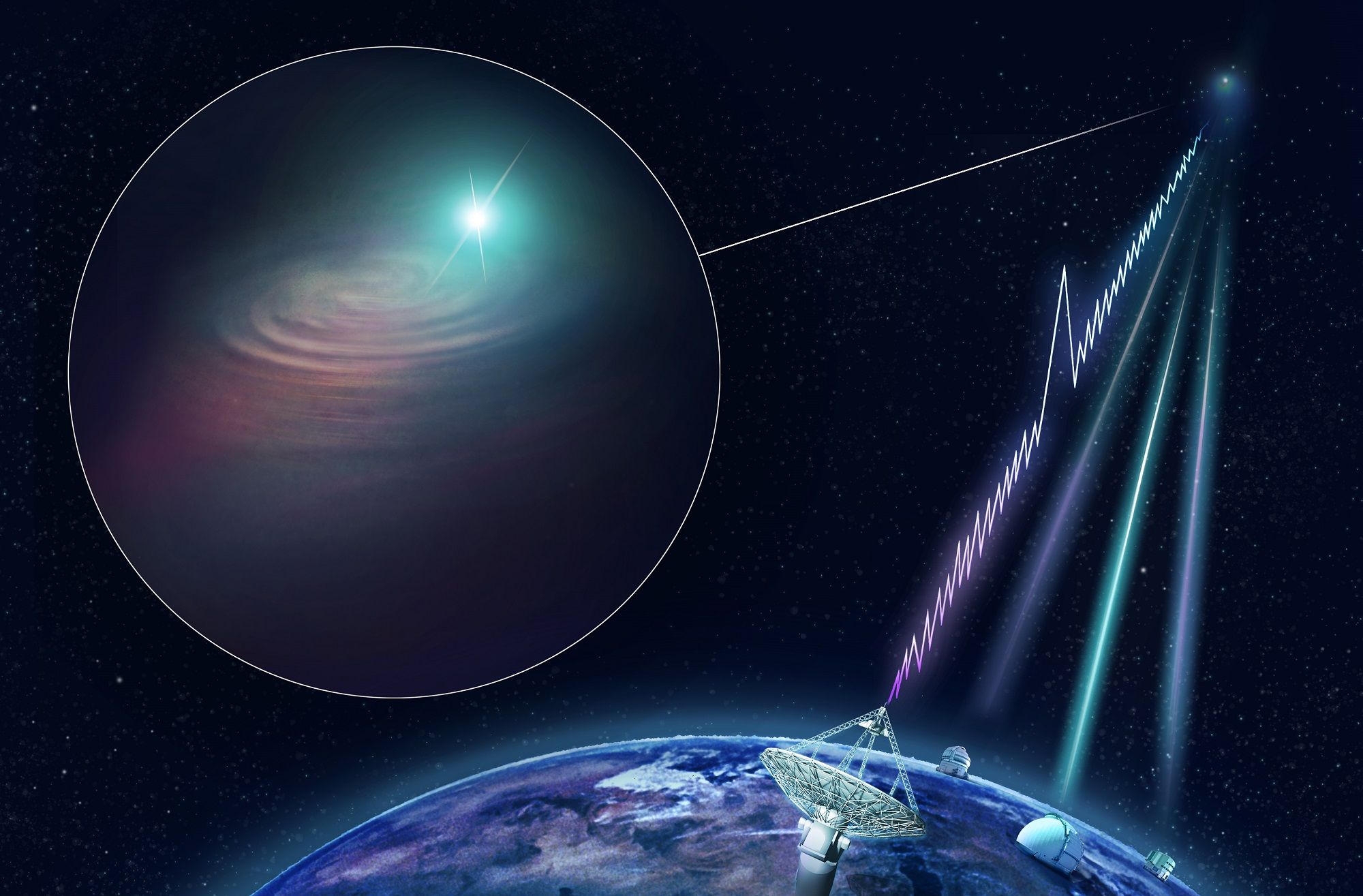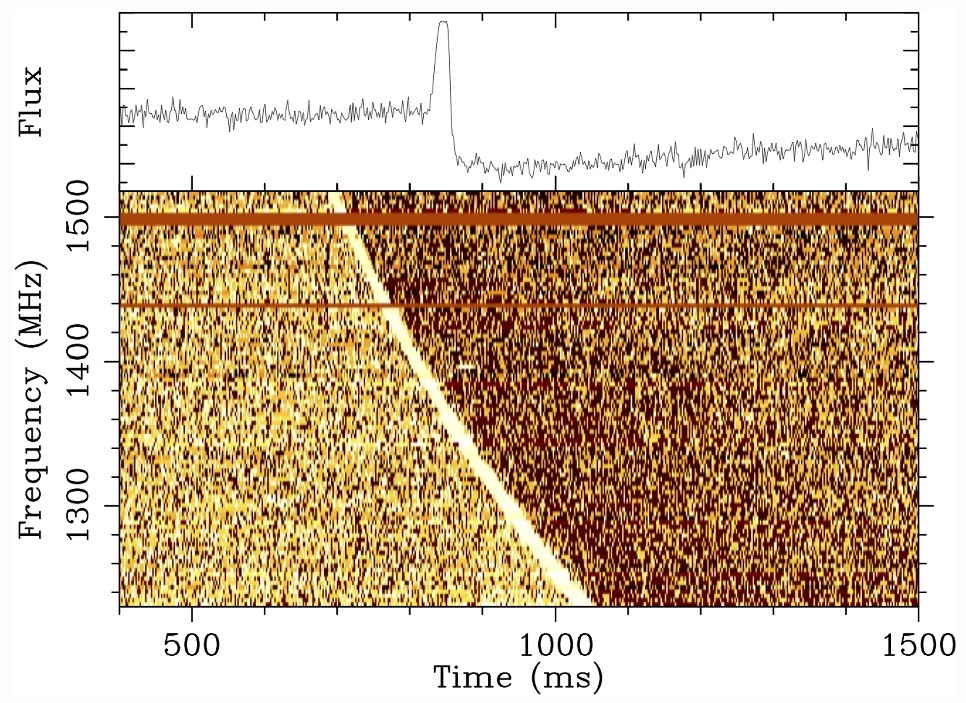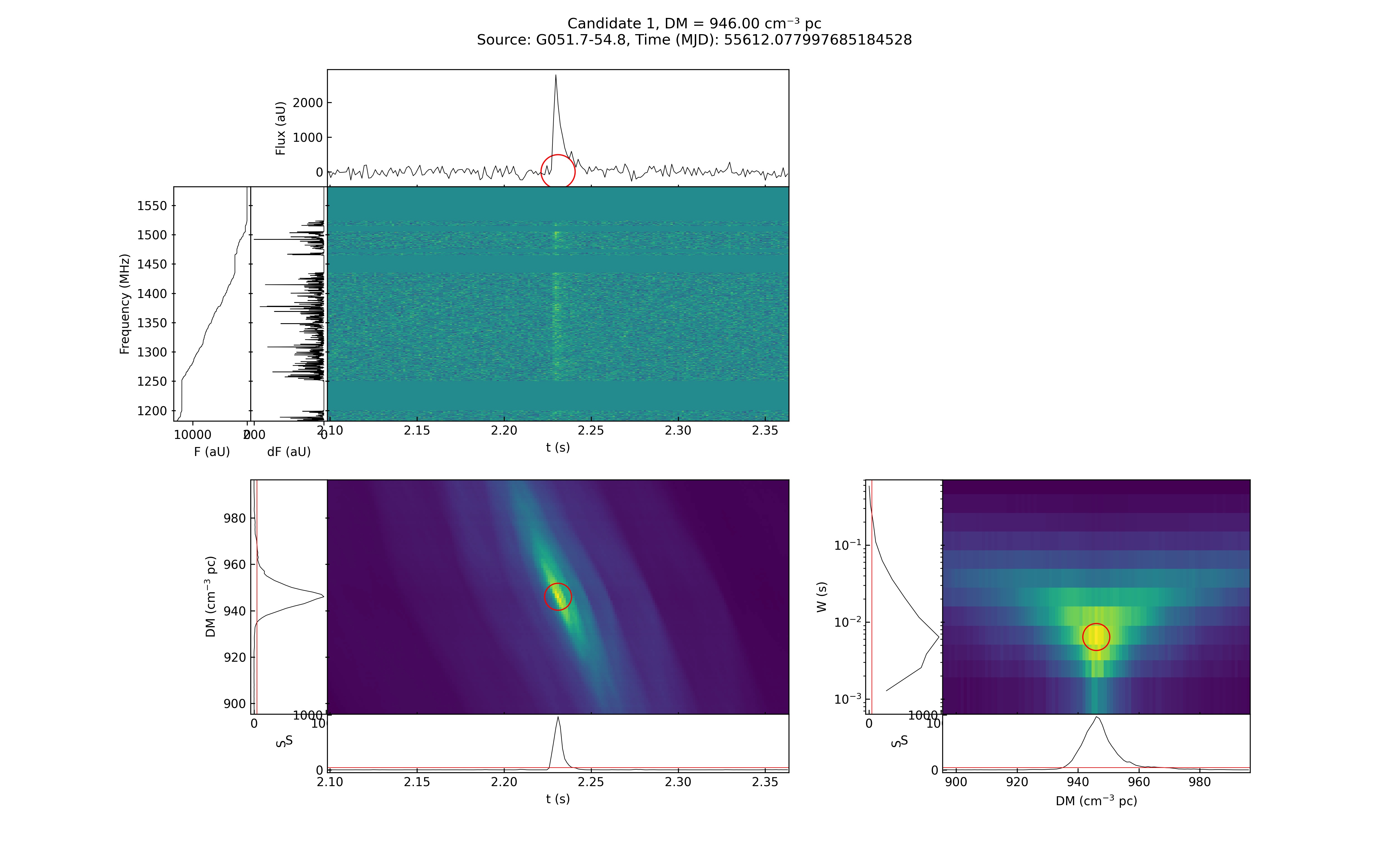
Fast Radio Bursts (FRBs) are brief, bright flashes of radio waves that last only a few milliseconds of extragalactic origin. They are one of the most mysterious phenomena in astrophysics, and their progenitor(s) are still unknown. The key characteristic of FRBs is their dispersion measure (DM) i.e. the frequency dependent delay due to electrons in the line of sight, and FRBs have DMs more than the Galactic contribution. DMs allow for study of FRBs’ host galaxies, and combined with their polarization properties measured using rotation measure (RM), magnetars are thought to be the best candidate for FRB progenitors.
The first FRB was discovered while reviewing data in radio pulsar surveys taken using the Parkes Telescope (Lorimer et al., 2007). Since then, hundreds of FRBs have been discovered, especially using instruments with large FOVs such as the Five-hundred-meter Aperture Spherical Telescope (FAST) and the Canadian Hydrogen Intensity Mapping Experiment (CHIME).

Previously, FRB detection are performed using pulsar signal processing programs (e.g. SIGPROC and PRESTO). Currently, there are various FRB detection codes available, mainly optimizing the computationally intensive dedispersion process. One of them is the Burst Emission Automatic Roger (BEAR) program, which is a standalone C++ pipeline for FRB detection developed for various Chinese telescopes (Men et al., 2019). Alternatively, the Python Language Radio Burst Emission Automatic Roger (PoLaR BEAR) program has been developed to provide a more human-readable syntax and easier/direct manipulation of the detection process (Nazri, 2021).

References
- Piggyback search for fast radio bursts using Nanshan 26 m and Kunming 40 m radio telescopes - I. Observing and data analysis systems, discovery of a mysterious perytonMonthly Notices of the Royal Astronomical Society, 488(3), Jul 2019